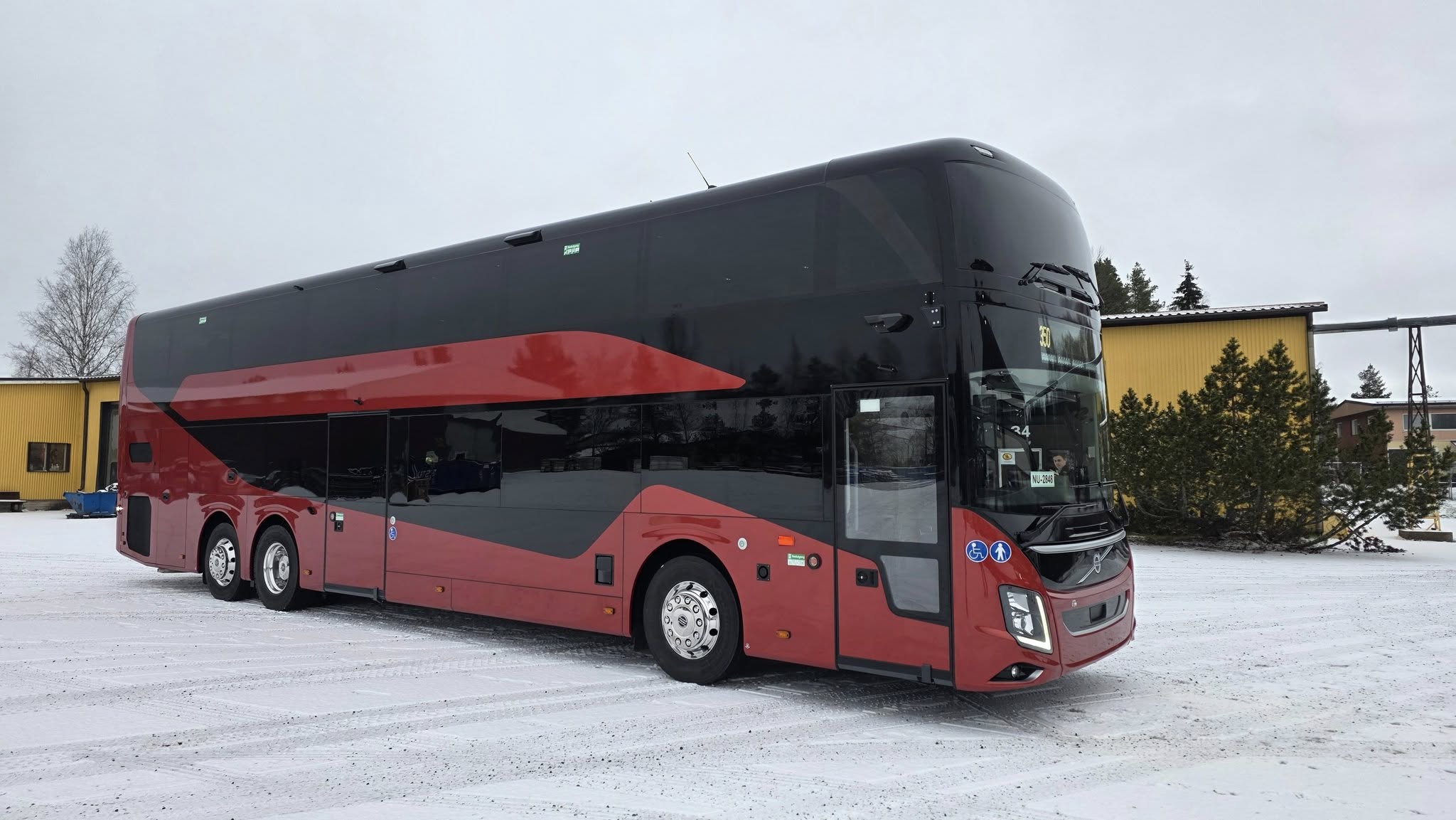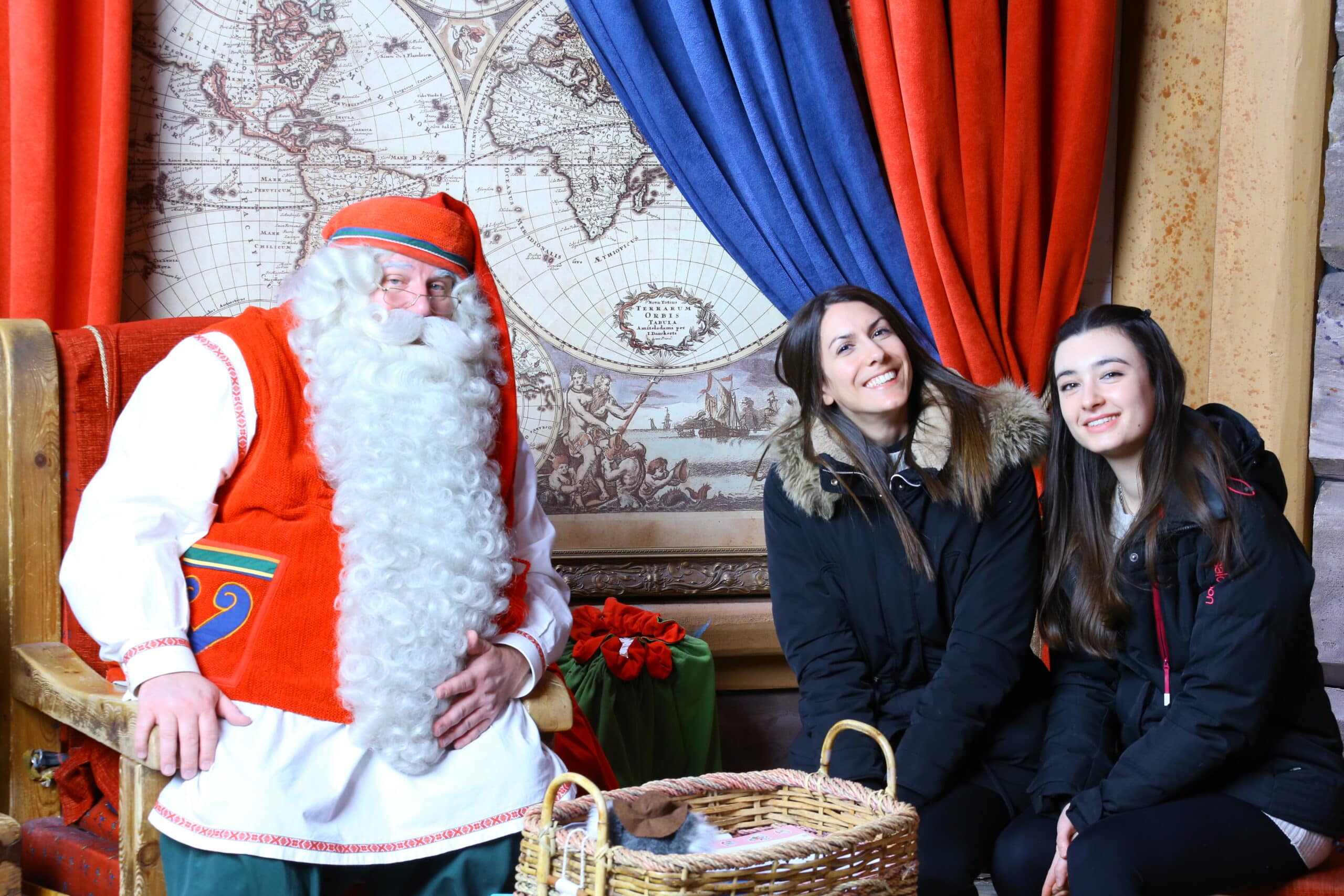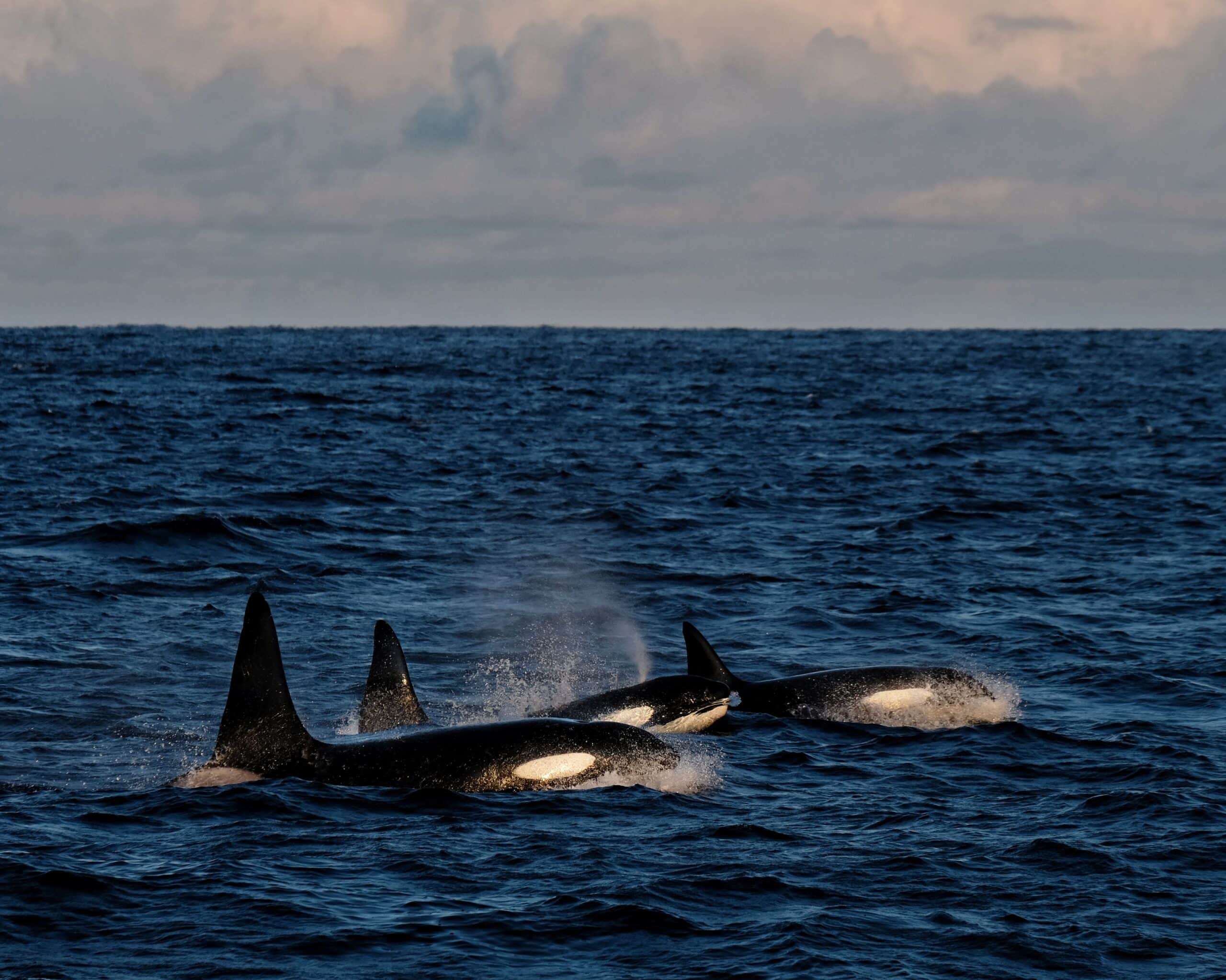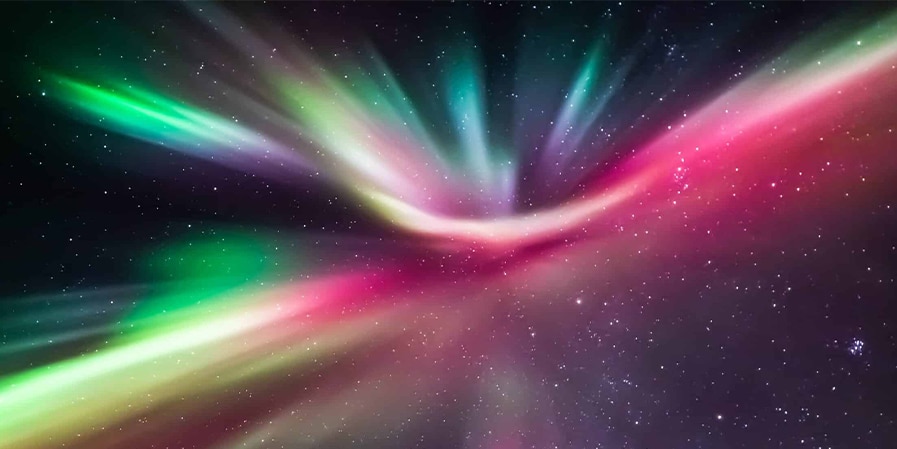
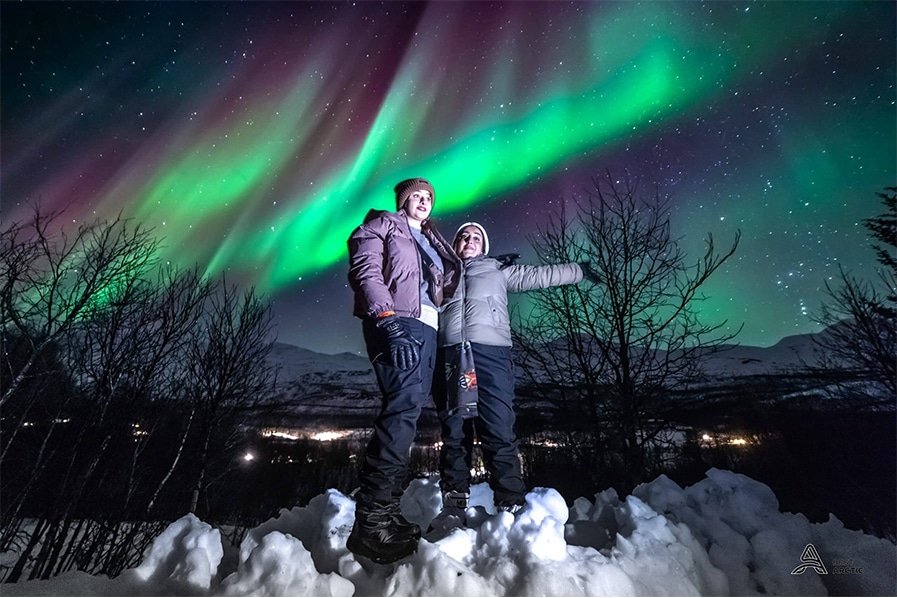
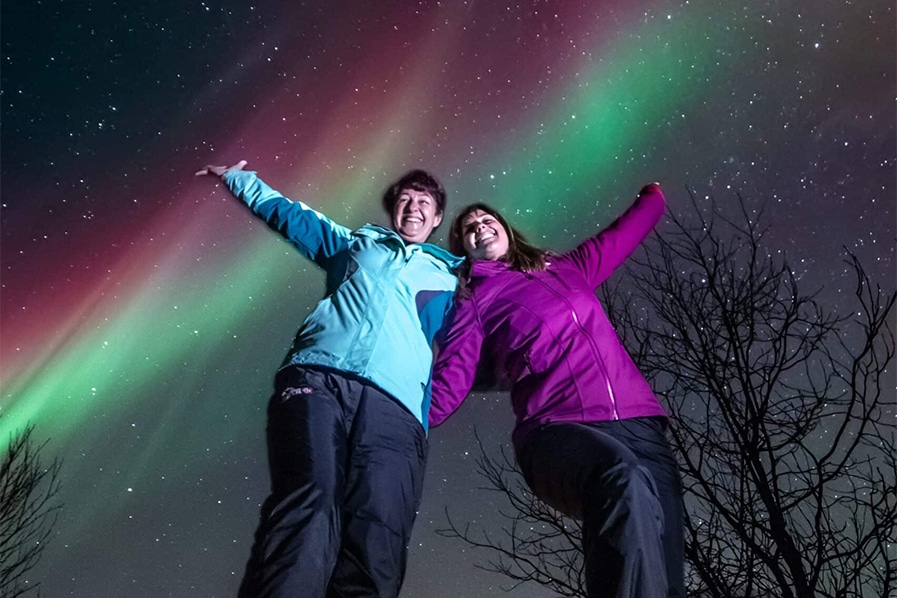
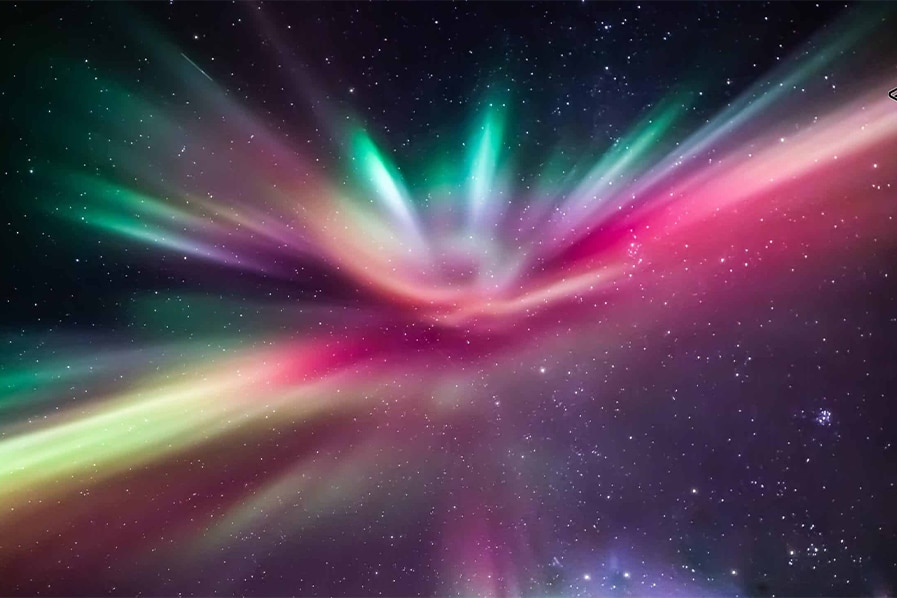
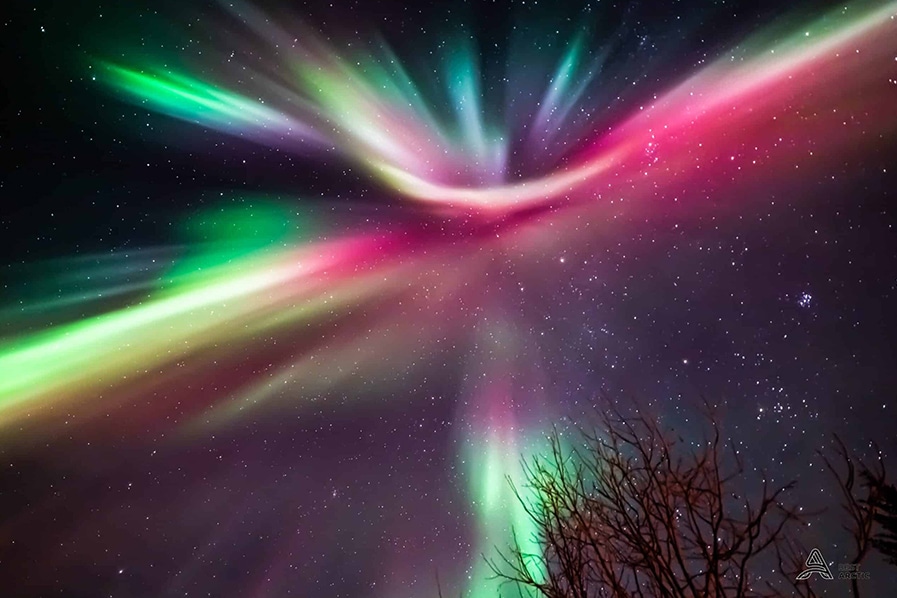
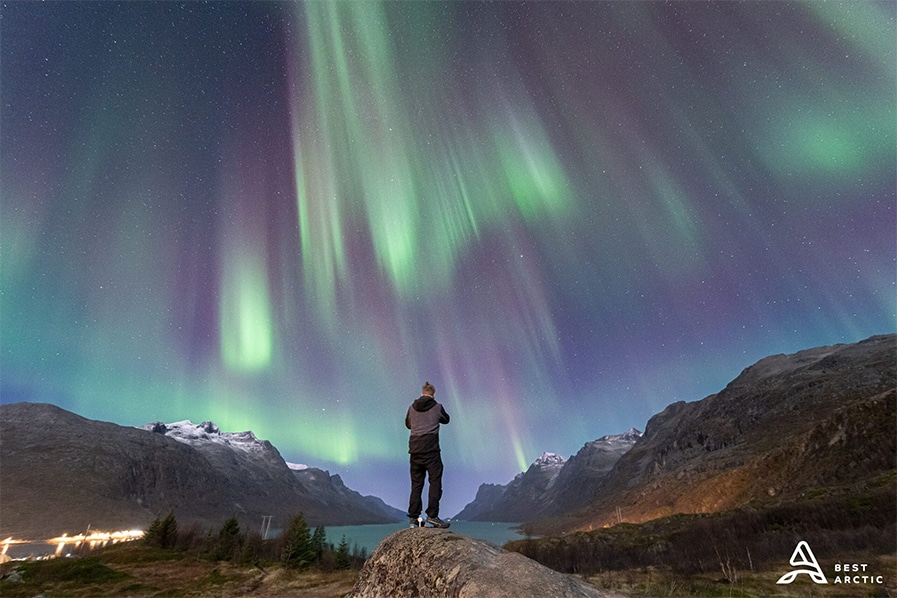
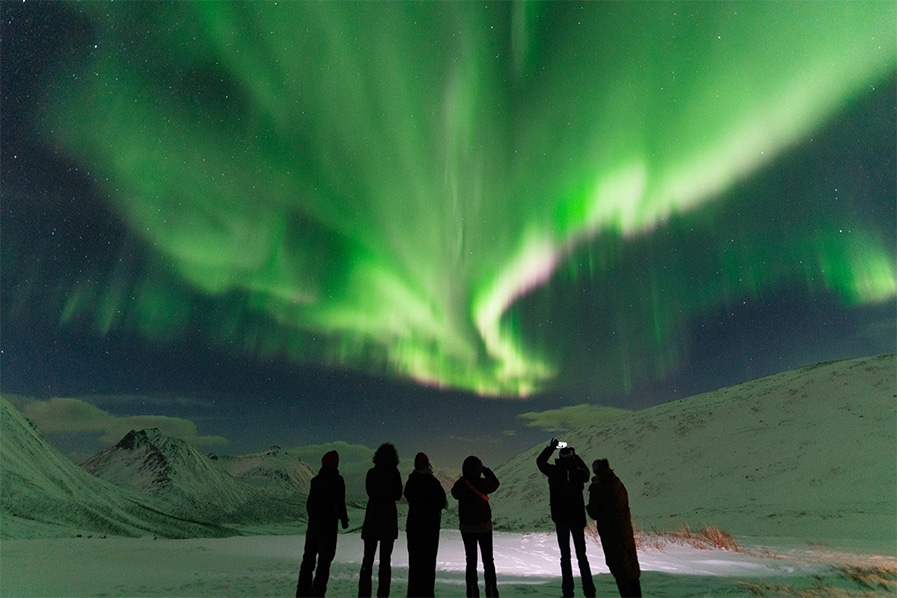
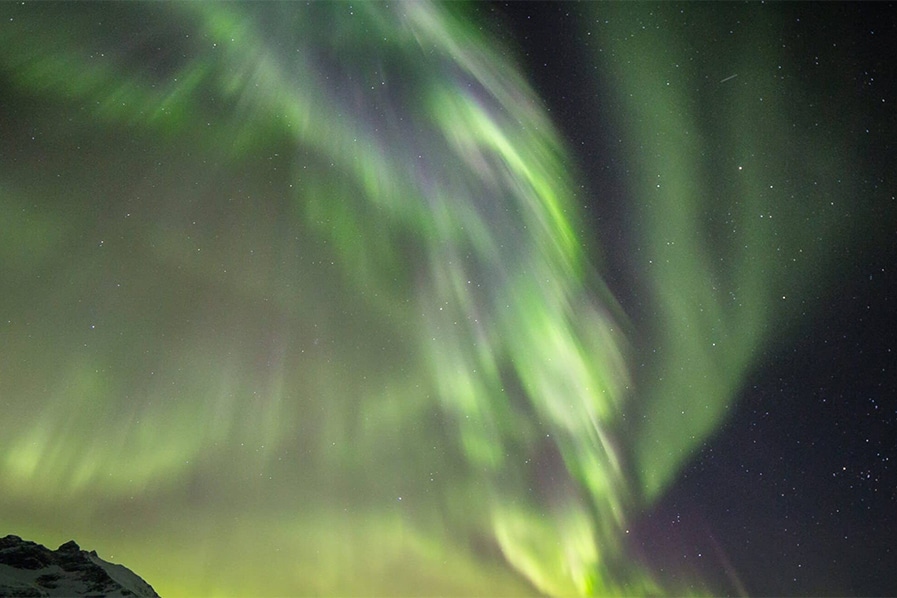
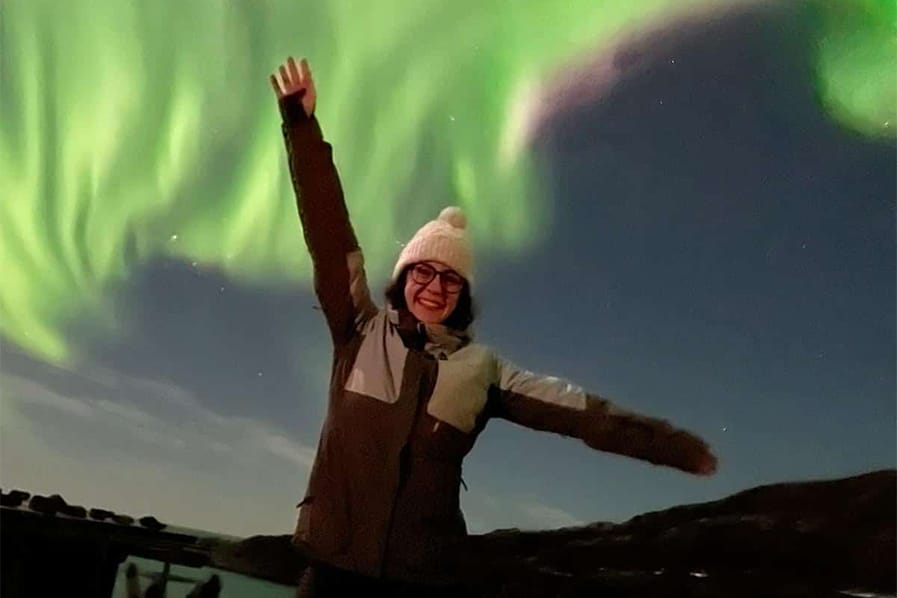
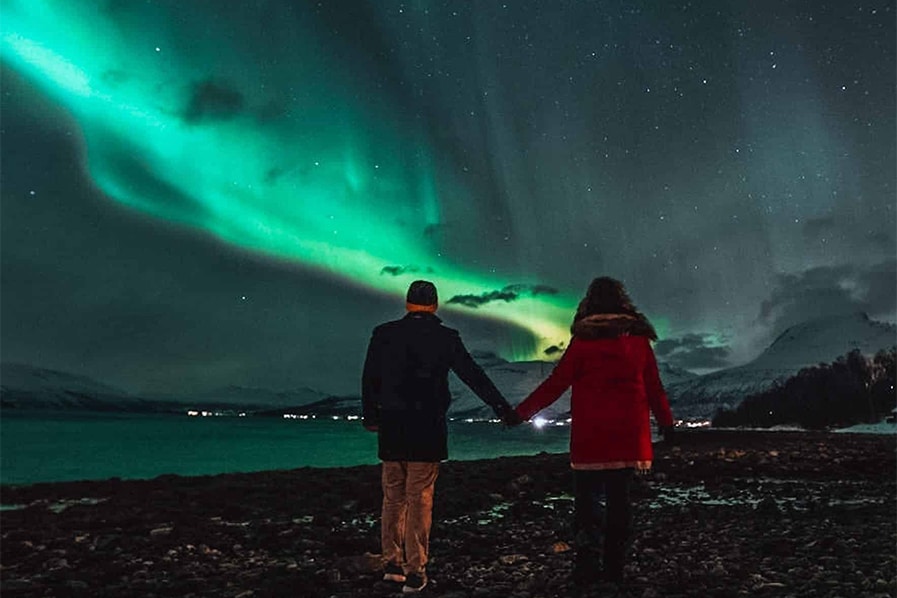
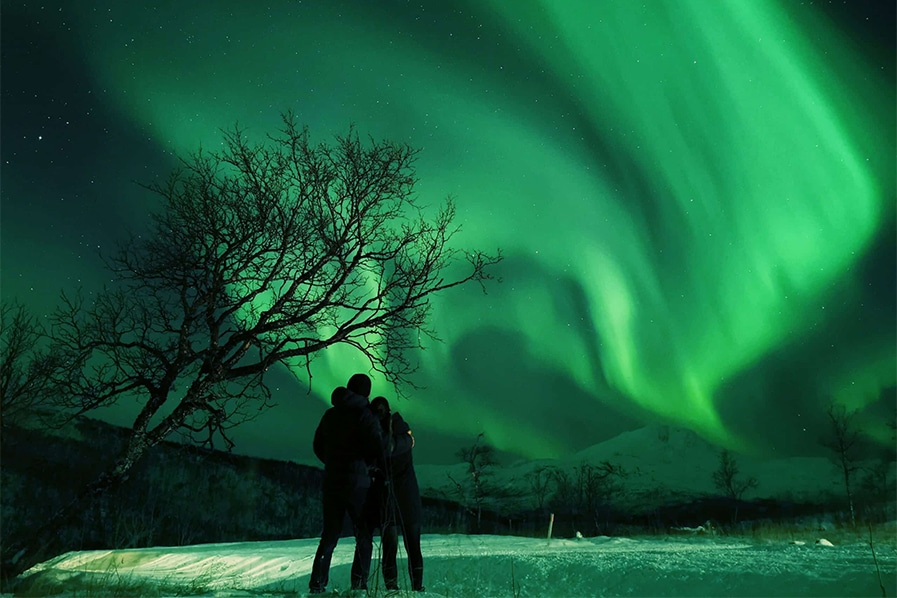
The best time to see the Northern Lights in Northern Norway
Tromsø is one of the best places in the world to see the Northern Lights (also known as aurora borealis). In recent times, our tour guides have been spotting incredible displays of this natural phenomenon with colours spanning pink, green, purple and even red on some evenings. Naturally, these spectacular displays are dependent on the local weather conditions. Cloudy or snowy evenings can prevent us from seeing the aurora borealis and the weather can be quite tricky to forecast in Tromsø.
According to experts, the chances to see amazing and strong Northern Lights will be higher in the next few years due to the Solar Maximum. But what is this?
What is the solar maximum?
The term Solar Maximum refers to a period of great solar activity during the Sun’s 11-year solar cycle, which stretches from the Solar Minimum to the Solar Maximum. During the Solar Maximum, large solar storms occur, meaning a period of higher Northern Lights activity and a dramatic increase in the chance of intense aurora. The next Solar Maximum is expected to peak in 2024/2025.
Which are the best months to see the Northern Lights?
Though the Northern Lights are always there, it’s impossible to see them during the daytime. This means that there are no Northern Lights observations during the summer in the Nordic countries because it’s bright around the clock due to the Midnight Sun phenomenon.
The best time to see the Northern Lights is during winter, which is from early September until mid-April. The best time of the day during this period is in the evening from 21:00 to 01:00. It’s possible to spot the Northern Lights earlier or later than this if you have a dark, clear sky and solar activity.
You need to keep in mind that the weather may suddenly change for the better or for the worse. If you are lucky, your chances of seeing the Northern Lights will improve. However, if you are unlucky, it may make it impossible to guarantee that you will see the Northern Lights during your stay. Consequently, we recommend allowing a few extra days, so you have the option of going on more tours.
You can also read all about the Northern Lights, what they are, what causes them and why Tromsø is one of the best places to see this natural phenomenon here.
Which Northern Lights tours are best to take in Tromsø?
You can choose between a variety of Northern Lights tours according to your requirements. If you are travelling with younger children (from age 4 to 10), or prefer a tour that includes a heated shelter with toilets, we recommend our Aurora Safari Camps due to the comfort and duration. If you are looking for a more flexible, smaller group experience, the Aurora Safari Minibus is the best option for you.
You can also mix a reindeer and Sami culture experience with your Northern Light tour, go on a snowmobile tour in the evening with the possibility of spotting Northern Lights (weather permitting) and many other tours. Check all the options here.

